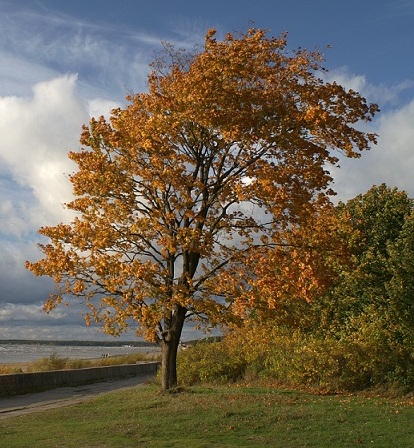How to Detect and Protect Your Vandalia Roof From Wind Damage
How to Detect and Protect Your Vandalia Roof From Wind Damage
Your roof was developed with the purpose of resisting just about everything Mother Nature throws at it. Some types of roofs, like metal roofing, can even last up to 70 years! However, over time there’s only so much your property can handle before it incurs some sort of damages. So it’s important that you know how to detect and protect your Vandalia roof from wind damage.
How High Winds Affect Your Roof
Surprisingly, snowstorms, hailstorms, and rainstorms don’t pose as large of a threat as windstorms. Most common layouts, like asphalt shingle roofs, can deal with winds up to 90 mph. While this sounds like a rare and extreme instance, thunderstorms can generate winds up to 100 mph.
An important factor to keep in mind is the layout of your home. The layout directly affects your home’s wind loading, or the amount of pressure-wind applies to your home. Particular areas are more prone to wind damage, like the corners or eaves. However, there are ways to minimize the threats to these areas, therefore avoiding some costly storm damage repairs to your home.
How to Detect Wind Damage on Your Roof
While it’s recommended to contact an experienced roofing contractor, there are several ways to identify wind damage on your roof. Below we’ve listed just a few obvious signs that you’ve incurred wind damage:
- Missing/Damaged Shingles: The loss of shingles is the most obvious sign that you’ve sustained wind damage; it’s hard to miss several shingles in your driveway or yard. Another thing to look for is general damages to your shingles. This includes curling, peeling, cracks, etc.
- Scattered Roofing Nails: After a fierce windstorm, be wary of several nails and the like on the ground. It’s highly recommended to comb your driveway/yard carefully to pick up any scattered materials/nails.
- Granule Loss: Granule, the sandpaper-like exterior of the shingle, can be easily scattered by high winds. More often than not, the dispersed granule is more than likely piled up in your gutters.
- Damaged Soffit or Fascia: Soffits and fascia are meant to run water off your roof away from your home. So if you’re experiencing any abnormal leaks after an intense windstorm, then it wouldn’t be surprising to discover damaged soffits or fascia.
How to Protect Your Roof From Wind Damage
The best way to protect and prevent any further wind damage is to contact a dependable roofing company in Vandalia, Ohio. After a thorough free inspection, they should tell you what type of materials and system would work best for your property. On top of that, they should provide some valuable information and roof maintenance tips. Here are just a few things we recommend to all homeowners regarding this matter:
- Reliable Insurance Company: Contrary to popular belief, wind damage is commonly covered under homeowners insurance. Find out if your insurance covers wind damage, and from there you might be able to submit an insurance claim.
- Quality Roofing Materials: To no one’s surprise, better quality materials hold up better against the elements. The best and most common materials used by contractors are tiles, metal, asphalt shingles, and slate.
- Accessible Contractor: Following a fierce windstorm, you’ll want a contractor you can contact the very same day. And here at Van Martin, we should not only get the best craftsmanship, but also the best customer service.
Getting The Best Roofing Services
If you’re in the need of shingle roof repair in Dayton, Ohio after an extreme windstorm, contact us at Van Martin. We offer free roof inspections on any and all properties and will work nonstop to ensure you get what you paid for. When looking for dependable roofers in Vandalia, Ohio, call us at (937) 742-4555, or schedule a free roof evaluation online today!



